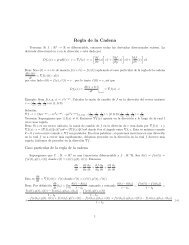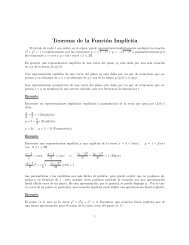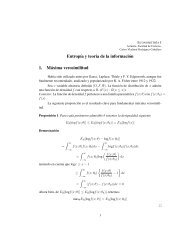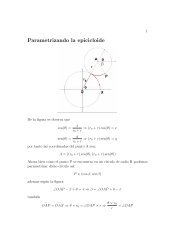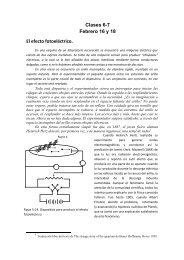"Surely You're Joking, Mr. Feynman!" - unam.
"Surely You're Joking, Mr. Feynman!" - unam.
"Surely You're Joking, Mr. Feynman!" - unam.
You also want an ePaper? Increase the reach of your titles
YUMPU automatically turns print PDFs into web optimized ePapers that Google loves.
company. His father was the one who was getting the money together and was, I think,<br />
the "president." He was the "vicepresident," along with another fella who was a<br />
salesman. I was the "chief research chemist," and my friend's brother, who was not very<br />
clever, was the bottlewasher. We had six metalplating baths.<br />
They had this process for metalplating plastics, and the scheme was: First,<br />
deposit silver on the object by precipitating silver from a silver nitrate bath with a<br />
reducing agent (like you make mirrors); then stick the object, with silver on it as a<br />
conductor, into an electroplating bath, and the silver gets plated.<br />
The problem was, does the silver stick to the object?<br />
It doesn't. It peels off easily. So there was a step in between, to make the silver<br />
stick better to the object. It depended on the material. For things like Bakelite, which was<br />
an important plastic in those days, my friend had found that if he sandblasted it first, and<br />
then soaked it for many hours in stannous hydroxide, which got into the pores of the<br />
Bakelite, the silver would hold onto the surface very nicely.<br />
But it worked only on a few plastics, and new kinds of plastics were coming out<br />
all the time, such as methyl methacrylate (which we call plexiglass, now), that we<br />
couldn't plate, directly, at first. And cellulose acetate, which was very cheap, was another<br />
one we couldn't plate at first, though we finally discovered that putting it in sodium<br />
hydroxide for a little while before using the stannous chloride made it plate very well.<br />
I was pretty successful as a "chemist" in the company. My advantage was that my<br />
pal had done no chemistry at all; he had done no experiments; he just knew how to do<br />
something once. I set to work putting lots of different knobs in bottles, and putting all<br />
kinds of chemicals in. By trying everything and keeping track of everything I found ways<br />
of plating a wider range of plastics than he had done before.<br />
I was also able to simplify his process. From looking in books I changed the<br />
reducing agent from glucose to formaldehyde, and was able to recover 100 percent of the<br />
silver immediately, instead of having to recover the silver left in solution at a later time.<br />
I also got the stannous hydroxide to dissolve in water by adding a little bit of<br />
hydrochloric acid something I remembered from a college chemistry course so a step<br />
that used to take hours now took about five minutes.<br />
My experiments were always being interrupted by the salesman, who would come<br />
back with some plastic from a prospective customer. I'd have all these bottles lined up,<br />
with everything marked, when all of a sudden, "You gotta stop the experiment to do a<br />
'super job' for the sales department!" So, a lot of experiments had to be started more than<br />
once.<br />
One time we got into one hell of a lot of trouble. There was some artist who was<br />
trying to make a picture for the cover of a magazine about automobiles. He had very<br />
carefully built a wheel out of plastic, and somehow or other this salesman had told him<br />
we could plate anything, so the artist wanted us to metalplate the hub, so it would be a<br />
shiny, silver hub. The wheel was made of a new plastic that we didn't know very well<br />
how to plate the fact is, the salesman never knew what we could plate, so he was<br />
always promising things and it didn't work the first time. So, to fix it up we had to get<br />
the old silver off, and we couldn't get it off easily. I decided to use concentrated nitric<br />
acid on it, which took the silver off all right, but also made pits and holes in the plastic.<br />
We were really in hot water that time! In fact, we had lots of "hot water" experiments.<br />
The other fellas in the company decided we should run advertisements in Modern




